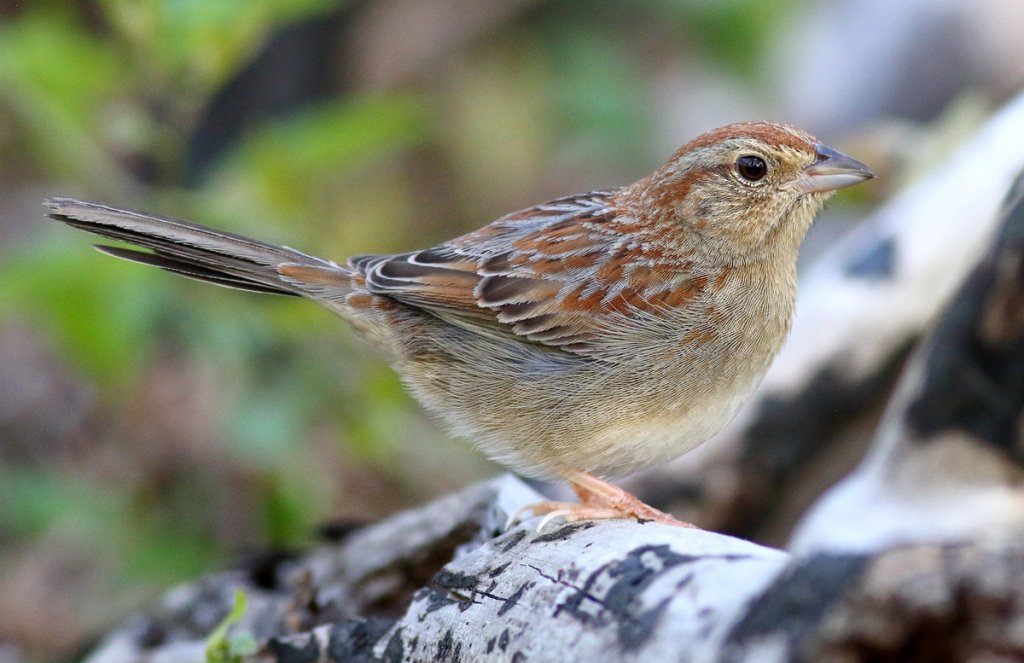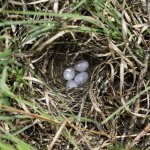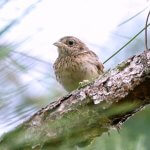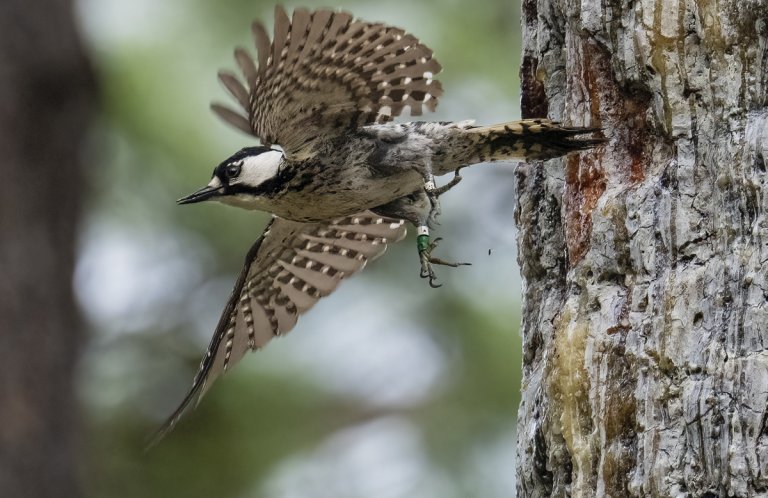About the Bachman's Sparrow
The shy and secretive Bachman's Sparrow is a specialty of southeastern pine forests and one of the only sparrow species endemic to the United States. Also known as the Pine-woods or Oak-woods Sparrow, this skulking species is far more often heard than seen. When sighted, it's an unassuming-looking bird, unstreaked grayish-tan below, with rufous and gray back and wings, and a rufous cap and eyeline.
The Bachman's Sparrow, like the Kirtland's Warbler, depends upon a landscape maintained by fire. This sparrow thrives in areas where forest fires regularly occur, as regular burning stops hardwood saplings from growing and maintains the grassy understory they require for nesting. Bachman's Sparrows are so dependent upon fire-shaped habitats that their populations begin to decline only 4-5 years after a burn.
Once common within its piney habitat, the Bachman's Sparrow began to disappear as the extensive longleaf pine forests of the southeastern U.S. were logged.
The Sparrow and the Woodpecker
The Bachman's Sparrow is not the only bird species of concern that inhabits southeastern pine forests. Its shares this habitat with the endangered Red-cockaded Woodpecker, and benefits from some land management activities targeted to that species, including managed burns. Other birds found in this habitat include the Northern Bobwhite, Red-headed Woodpecker, and Swallow-tailed Kite.
Songs and Sounds
The Bachman Sparrow's pretty song begins as a clear whistle, followed by a short trill.
Listen here:
Breeding and Feeding
Going To Ground
The Bachman's Sparrow is essentially monogamous, with birds spending most of the year in pairs or family groups. After mating, a female builds a domed nest of grasses, vegetation, and rootlets on the ground, lined with softer material such as animal hair. Her nest is concealed near a clump of grass or bush. Her clutch size is usually 3-5 eggs, which she incubates alone. The male brings food for the female as she broods, and the naked, helpless young hatch after about two weeks. This species usually raises two broods per breeding season and will renest after failed attempts. The female will build a new nest for each nesting attempt.
Adult Bachman's Sparrows perform distraction displays when a potential predator, such as a snake, approaches their nest. They will also hide from predators in underground burrows made by tortoises or armadillos when pursued.

The majority of a Bachman's Sparrow's diet consists of insects, particularly beetles, caterpillars, and grasshoppers, although it also feeds on a variety of grass seeds. It walks and hops along the ground while foraging. Like the Grasshopper and Henslow's Sparrows, the Bachman's Sparrow prefers to run along the ground, rather than fly, when threatened.
Region and Range
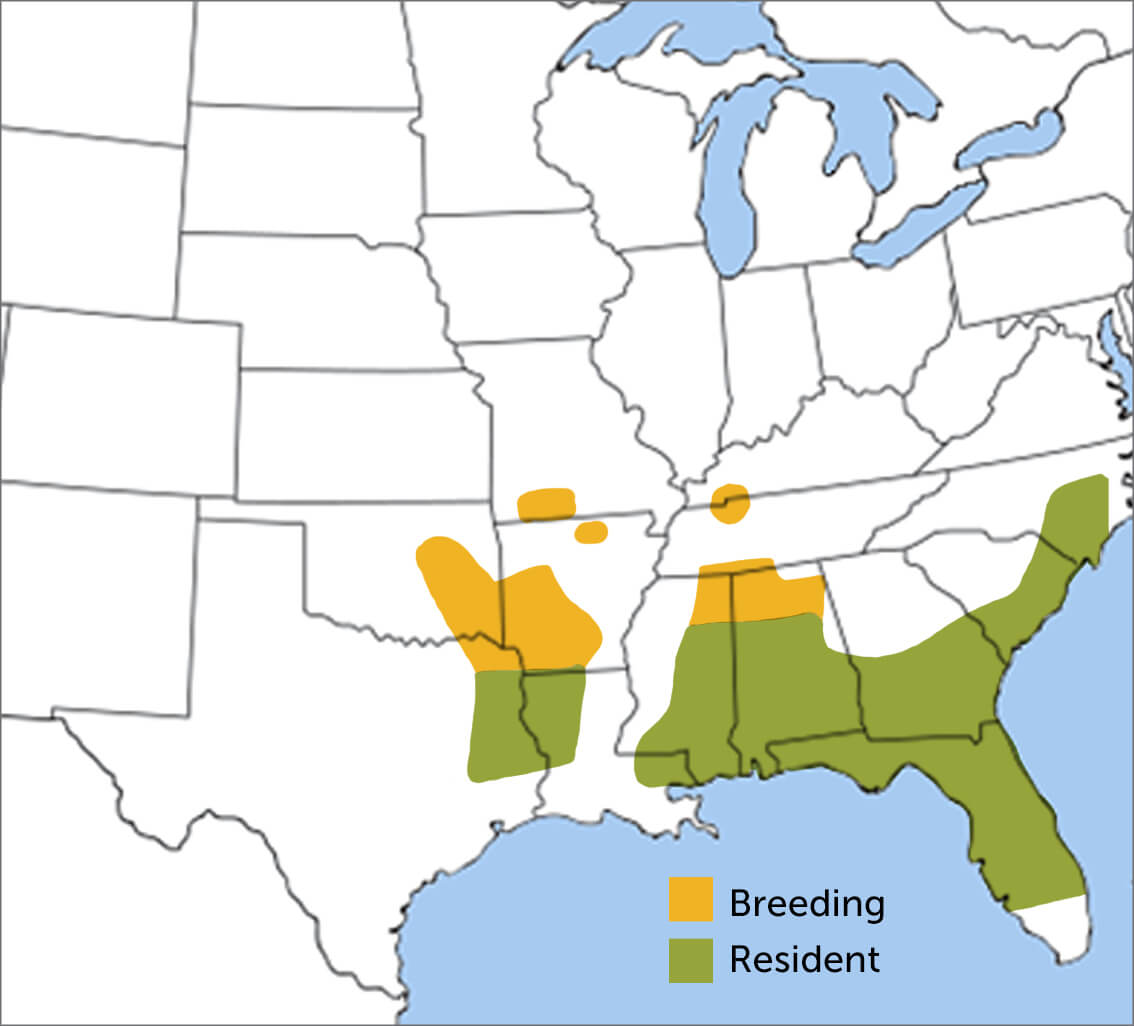
The Bachman's Sparrow is mainly a resident species, found only in the southeastern United States. Most are permanent residents of Florida and the Gulf Coast, a contraction in their historic range, which once reached as far north as Ohio, Illinois, and Pennsylvania. More northerly populations in North Carolina, Missouri, and Kentucky move south to winter in Florida, the Gulf states, and eastern Texas.
Two subspecies of Bachman's Sparrow are recognized, differing in plumage pattern and brightness.
Conservation

Help support ABC's conservation mission!
The Bachman's Sparrow has suffered one of the steepest population declines of any songbird — a 76-percent reduction since 1966 — primarily due to habitat loss and lack of fire management. Because of its precipitous population decline and limited range, the Bachman's Sparrow is classified as a Red List species by Partners in Flight.
ABC's work with the Sustainable Forestry Initiative is helping inform forest management practices that benefit landowners while maintaining habitat for the Bachman's Sparrow as well as species such as the Red-cockaded Woodpecker, Northern Bobwhite, and Swallow-tailed Kite.
Get Involved
Policies enacted by the U.S. Congress and federal agencies, such as the U.S. Fish and Wildlife Service, have a huge impact on U.S. birds. You can help shape these rules for the better by telling lawmakers to prioritize birds, bird habitat, and bird-friendly measures. To get started, visit ABC's Action Center.
Living a bird-friendly life can have an immediate impact on the birds around you. Doing so can be as easy as adding native plants to your garden, avoiding pesticides, and keeping cats indoors. To learn more, visit our Bird-Friendly Life page.
American Bird Conservancy and our Migratory Bird Joint Venture partners have improved conservation management on more than 8.5 million acres of U.S. bird habitat — an area larger than the state of Maryland — over the last ten years. This is a monumental undertaking, requiring the support of many, and you can help by making a gift today.





































